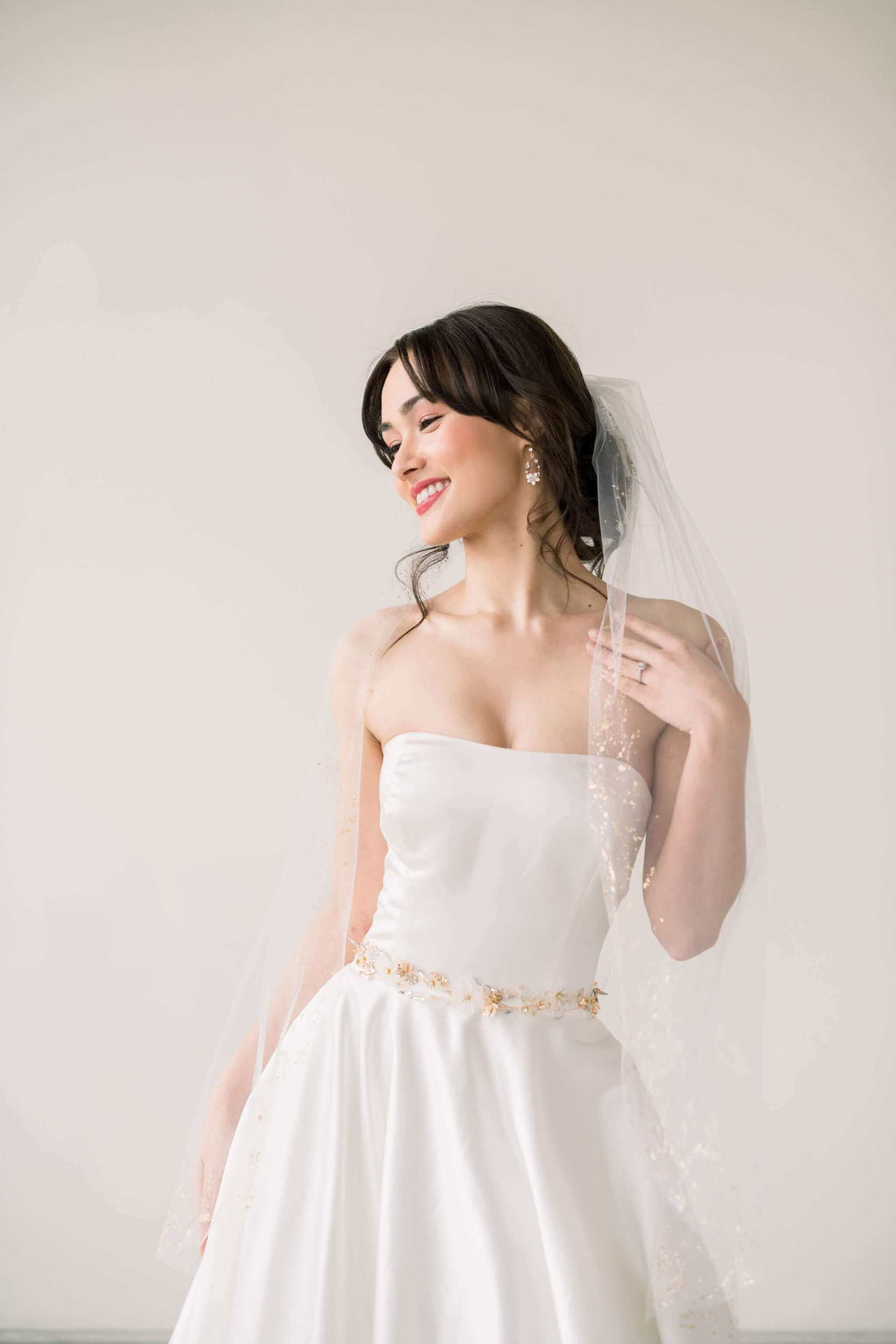
What is a single tier veil? Wedding veil styles explained
A single tier veil is a simple yet elegant type of bridal veil that consists of a single layer of fabric. This type of veil is perfect for brides who want to add a touch of romance and tradition to their wedding day look, without overwhelming their dress or hairstyle.
Single tier veils are typically made from lightweight and delicate fabrics such as tulle or English net, and come in a variety of lengths to suit different styles and preferences. Some popular options include a classic elbow length veil, a romantic fingertip length veil, or a vintage-inspired birdcage veil.
One of the benefits of a single tier veil is that it is a relatively low-maintenance accessory. Unlike multi-tier veils, which can be more cumbersome to handle and store, a single tier veil is easy to manage and can be worn with a variety of hairstyles. Additionally, a single tier veil can be worn with a variety of dress styles, from classic and traditional to modern and minimalist.
Another benefit of a single tier veil is that it can be customized to suit the bride's specific needs. For example, a single tier veil can be embellished with beads, crystals, or embroidery to add a touch of sparkle and glamour to the overall look. Additionally, a single tier veil can be cut to a specific length to perfectly complement the bride's dress.
Overall, a single tier veil is a timeless and elegant choice for any bride looking to add a touch of romance to her wedding day look. Whether you're going for a classic or modern look, a single tier veil can be tailored to suit your unique style and preferences.
It is also worth mentioning that single tier veils can be attached to the hair with a comb or a hairpin, making them easy to put on and remove. This is a great option for brides who want to switch up their look throughout the day, from ceremony to reception.

